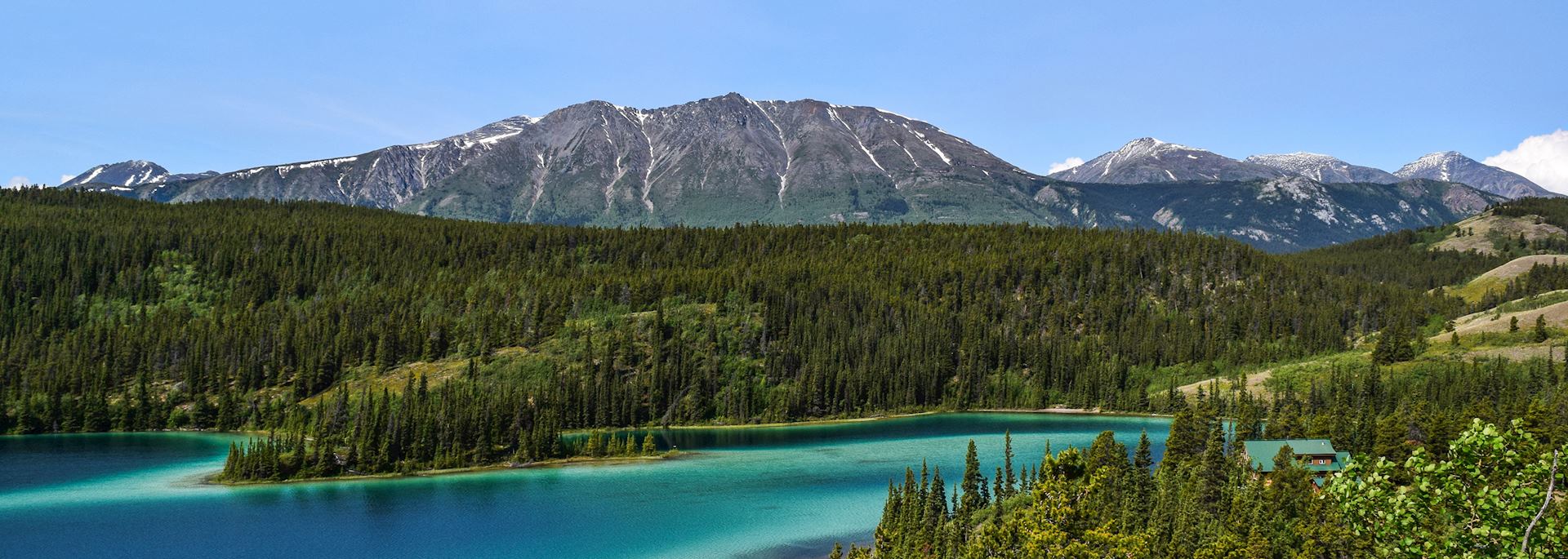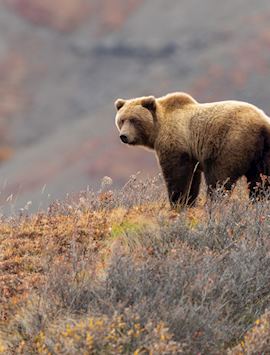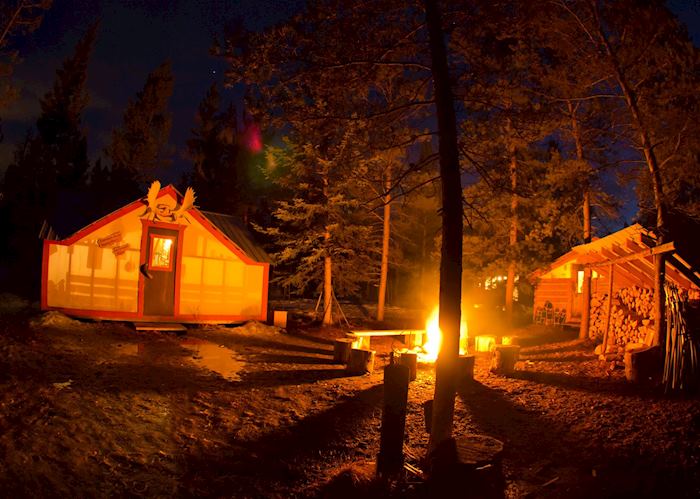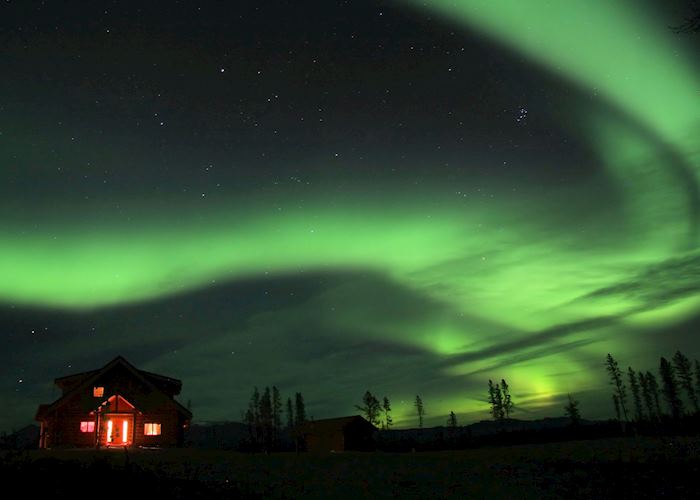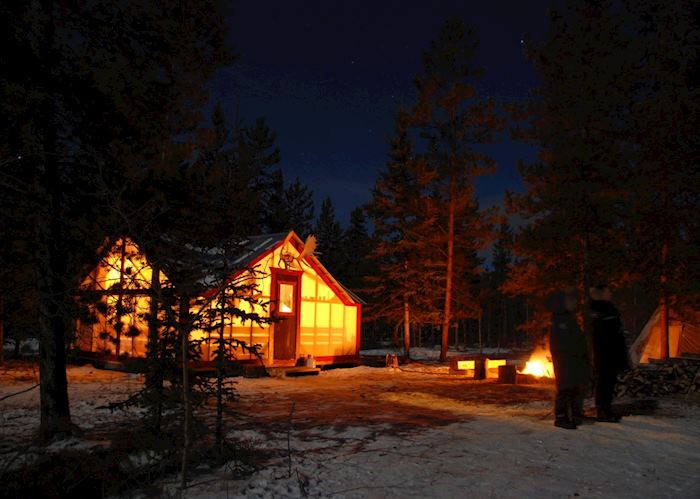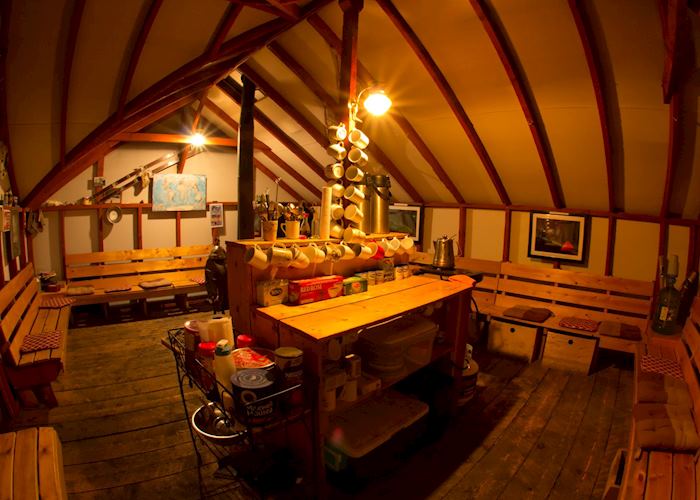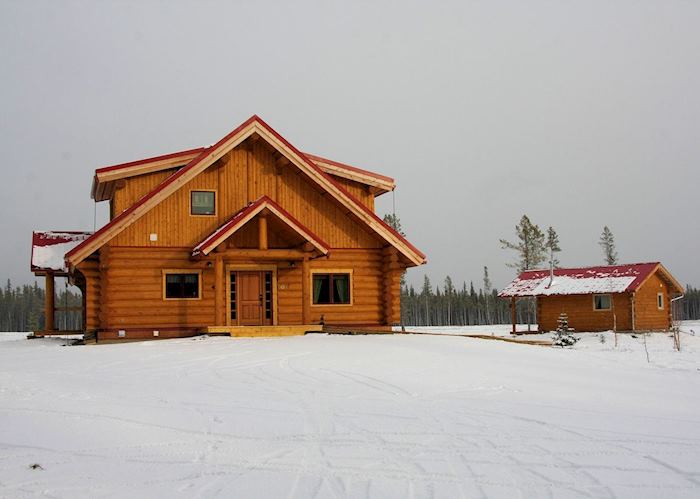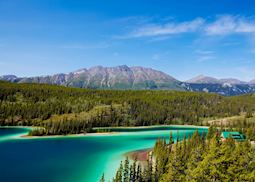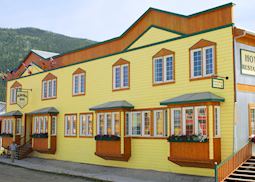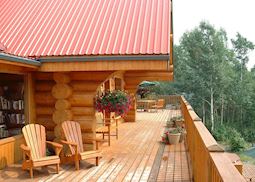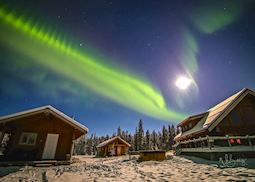Jump to:
With a history that’s almost tangible and landscapes to rival anywhere in the Rockies, the Yukon is like nowhere else in Canada. Raging rivers flow between mountains that are locked in snow for much of the year. Glaciers and icefields continue to shape the landscape. And, dense forests provide habitat for grizzly bears, moose and wolverines. It’s an untamed region, but our specialists will use their first-hand experiences to help plan your trip to the Yukon.
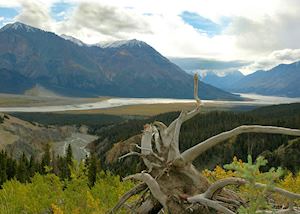 Kluane National Park is home to Canada’s highest peak, Mount Logan. You can follow hiking trails that ribbon through its green valleys, or picnic by the aquamarine waters of Kluane Lake. From August until April, you have a chance of seeing the northern lights strobing across the night sky — we can arrange for you to visit the best places for seeing this natural phenomenon.
Kluane National Park is home to Canada’s highest peak, Mount Logan. You can follow hiking trails that ribbon through its green valleys, or picnic by the aquamarine waters of Kluane Lake. From August until April, you have a chance of seeing the northern lights strobing across the night sky — we can arrange for you to visit the best places for seeing this natural phenomenon.
As well as the Yukon’s wilderness, our specialists have explored its towns, many of which sprang up during the late 19th-century Klondike Gold Rush. Dawson City has barely changed since then — wooden boardwalks and dirt roads link false-fronted houses, you can still pan for gold at nearby Bonanza Creek, and in old saloons you might hear locals sharing unlikely tales.
who's been there
-
617-223-4521617-223-4583
- Make an inquiry
Places to visit in the Yukon
Featuring heavily on our experiences of visiting the Yukon, these selected places are destinations that also prove consistently popular with our travelers. Our specialists can help you choose how to include them in your wider trip, based on your preferences.
Suggested itinerary featuring the Yukon
This sample itinerary will give you an idea of what is possible when you travel in the Yukon, and showcases routes we know work particularly well. Treat this as inspiration, because your trip will be created uniquely by one of our specialists.
Places in and around the Yukon
- Dawson City The Yukon
- Keno City The Yukon
- Kluane National Park The Yukon
- Marsh Lake The Yukon
- Mayo The Yukon
- Whitehorse The Yukon
- Nahanni National Park 276 miles away
Photos of the Yukon
Our expert guides to exploring the Yukon
Written by our specialists from their own experiences of visiting the Yukon, these guides will help you make the most of your time there. We share both our practical recommendations and the best ways to appreciate the Yukon at its best.
-
Canada's Arctic, the Yukon & Prairie Provinces ![White Pass Railroad]()
Canada's Arctic, the Yukon & Prairie Provinces
Canada's Arctic, the Yukon & Prairie Provinces
Canada's northernmost territory is a remote and starkly beautiful landscape. We can recommend lodges or expedition cruises to provide the best opportunities of seeing wildlife and exploring the highlights of this spectacular wilderness.
Read this guide -
Self-driving in the Yukon: chasing the ghost of the Gold Rush ![Carcross, Yukon]()
Self-driving in the Yukon: chasing the ghost of the Gold Rush
Self-driving in the Yukon: chasing the ghost of the Gold Rush
Canada specialist Jon shares his tried-and-tested route for exploring the Yukon by car. He also suggests things to see and do along the way to make the most of your trip, from visiting time-frozen towns to hiking in lake-strewn parks.
Read this guide -
Self-drive vacations in Canada ![Jasper National Park]()
Self-drive vacations in Canada
Self-drive vacations in Canada
Whether you choose a route circuiting western Canada’s renowned mountains, glaciers and lakes, or you’d rather go off-grid exploring the traditional fishing villages and coastal drives of the Maritimes, Canada’s well-maintained, easily navigable roads make it an excellent self-drive destination.
Read this guide
Accommodation choices for the Yukon
We've selected a range of accommodation options for when you visit the Yukon. Our choices usually come recommended for their character, facilities and service or location. Our specialists always aim to suggest properties that match your preferences.
-
![Dalton Trail Lodge, Haines Junction]()
Dalton Trail Lodge
Kluane National Park -
![The Aurora Inn, Dawson City]()
Aurora Inn - Dawson City
Dawson City -
![Inn on the Lake, Marsh Lake]()
Inn on the Lake
Whitehorse -
![Edgewater Hotel Whitehorse exterior]()
Edgewater Hotel
Whitehorse -
![Northern Lights Resort & Spa, Whitehorse]()
Northern Lights Resort & Spa
Whitehorse -
![Southern Lakes Resort, Tagish]()
Southern Lakes Resort
Yukon
